Video appears to show killing of captive Russian soldier
- Published
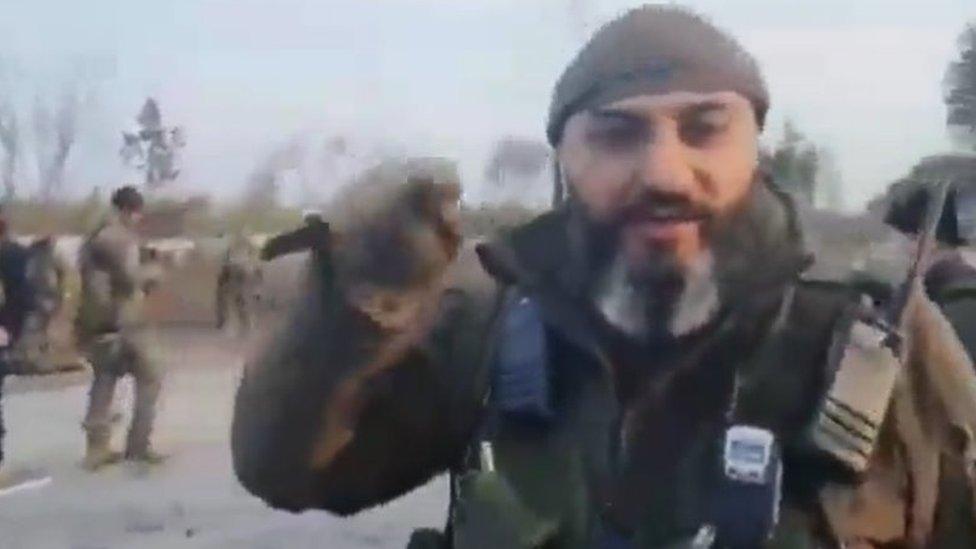
A video has emerged which purports to show Ukrainian forces shooting and killing a captive Russian soldier.
It was filmed on a road to the west of the Ukrainian capital Kyiv, where Russian forces have been retreating.
Ukraine's Foreign Minister Dmytro Kuleba said on Thursday that he was aware of the video and it would "definitely be investigated".
The BBC has been analysing the footage - here is what we have found out so far.
Warning: Graphic image and details that some may find upsetting.
What does the video show?
The video shows four people in military fatigues on the ground and one of those has their arms tied behind their back.
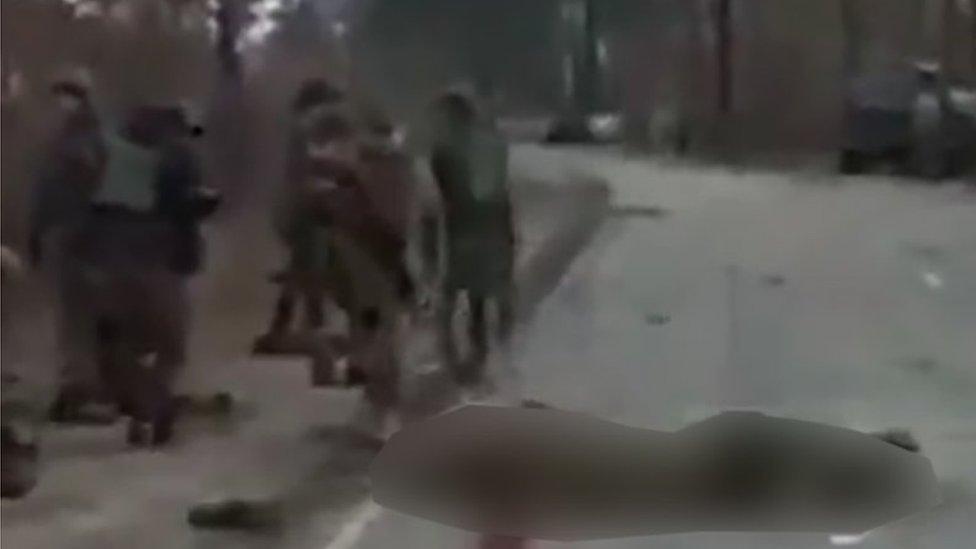
Three are not moving but one appears still to be alive and wheezing although badly injured. A man out of shot says "[expletive] leave him" and another responds "I don't want to [expletive] leave him". A soldier (whose face cannot be seen on the video) then shoots him several times until he stops moving.
The video then pans round to show other soldiers reacting.
All of the bodies on the floor are wearing military uniform and there are pools of blood.
You can only see the face of one of these people - the other three are face down on the road.
Where and when was the video filmed?
We have located the incident to the main road outside the town of Dmytrivka to the west of Kyiv. The road links Dmytrivka to Irpin and Bucha.
Scenes shown in the video match the scenery on Google Street View of the area.
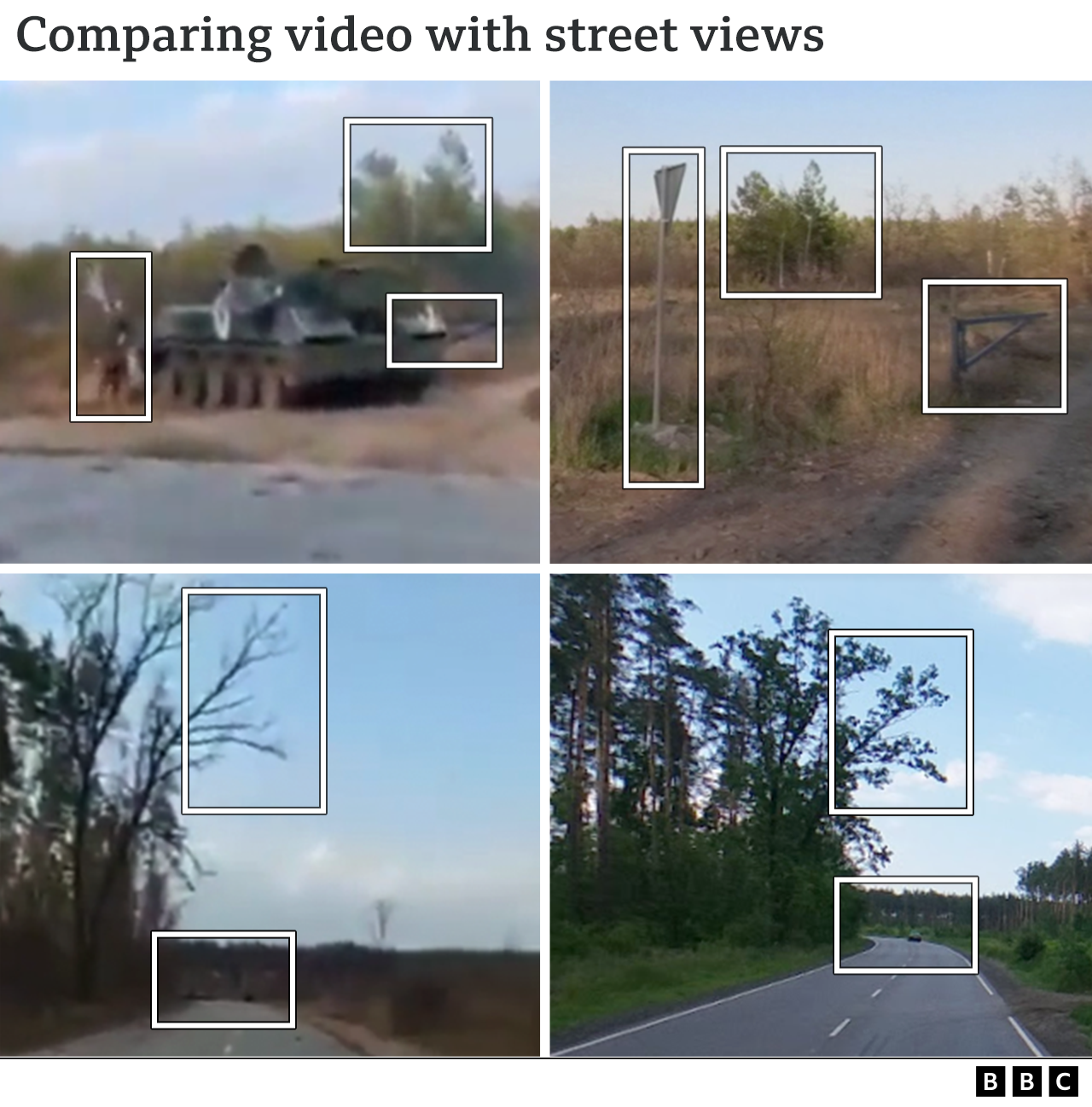
In a satellite image taken of the same road on 31 March, you can see what appears to be blood stains on the ground and armoured vehicles which are in the video.
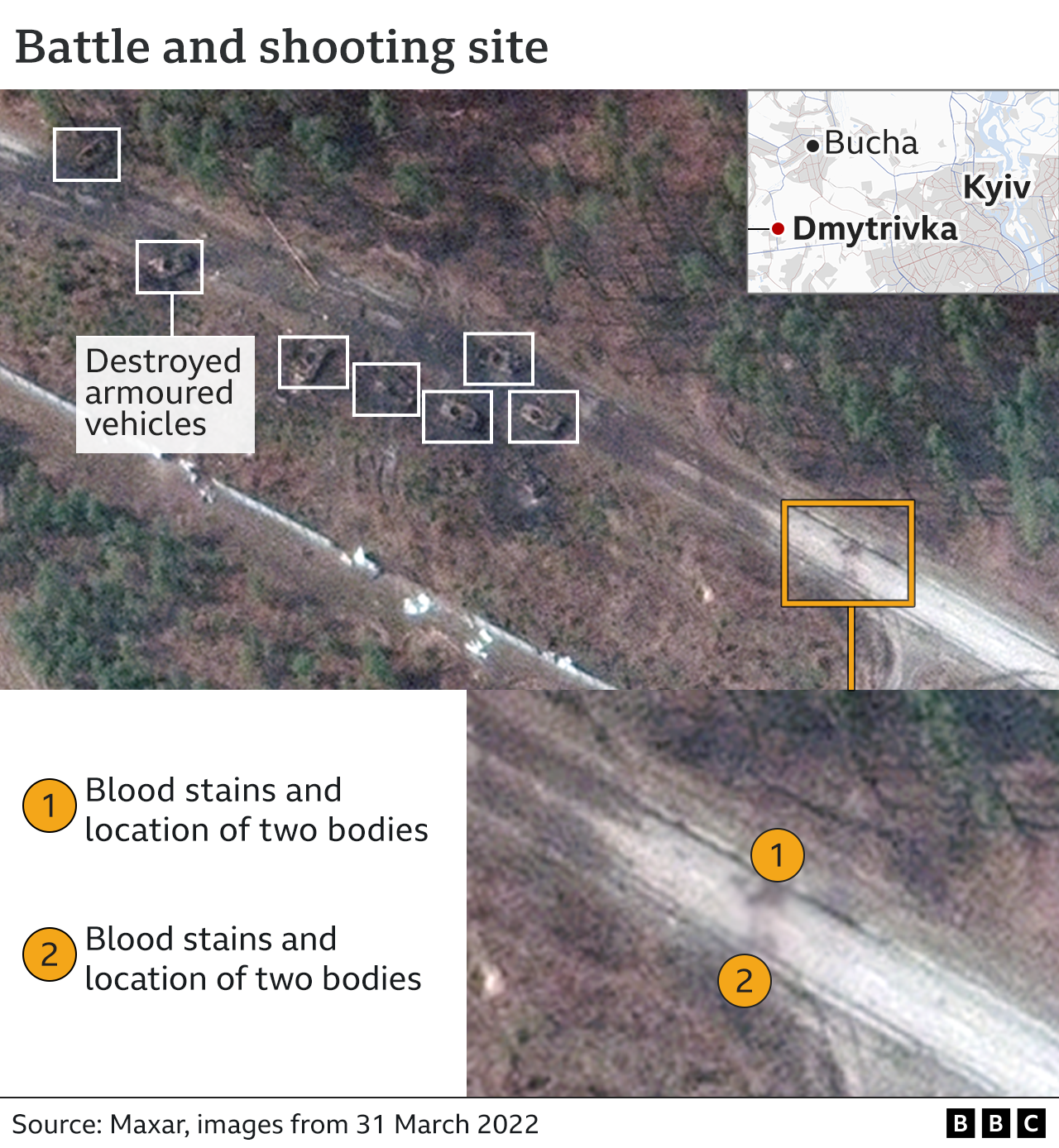
We can't be sure what day the video was filmed, although we do know it was taken in the afternoon due to the position of the shadows on the road.
The first version we found of the video was posted on the morning of 30 March - meaning it was filmed in the afternoon of 29 March or earlier.
How do we know the dead soldiers are Russian?
The main clue comes from what is said during the video.
One of the soldiers standing over the bodies on the floor says: "Here they are, the defenders of the Russian army."
On top of this, the video also features unaccompanied armoured vehicles with a V painted on the side - typically a sign Russian troops mark their vehicles with.
Two of the people on the floor are wearing white armbands, which have been used as identification by Russian soldiers in some parts of Ukraine. Red and orange armbands have also been used. There have also been reports that civilians have been encouraged to wear white armbands in some areas.
Are we sure that Ukrainian soldiers are involved?
On the military fatigues of some of the soldiers we can see blue armbands and Ukrainian flag patches, which are typical identifiers for Ukrainian forces. Clearly that is not proof of their identity.
From what we can hear in the videos the soldiers are all speaking Russian, which is widely spoken in Ukraine.
About half way through the video we can see one of the soldiers faces - a bearded man - very clearly. A couple of other soldiers' faces are clearly visible at points in the video.
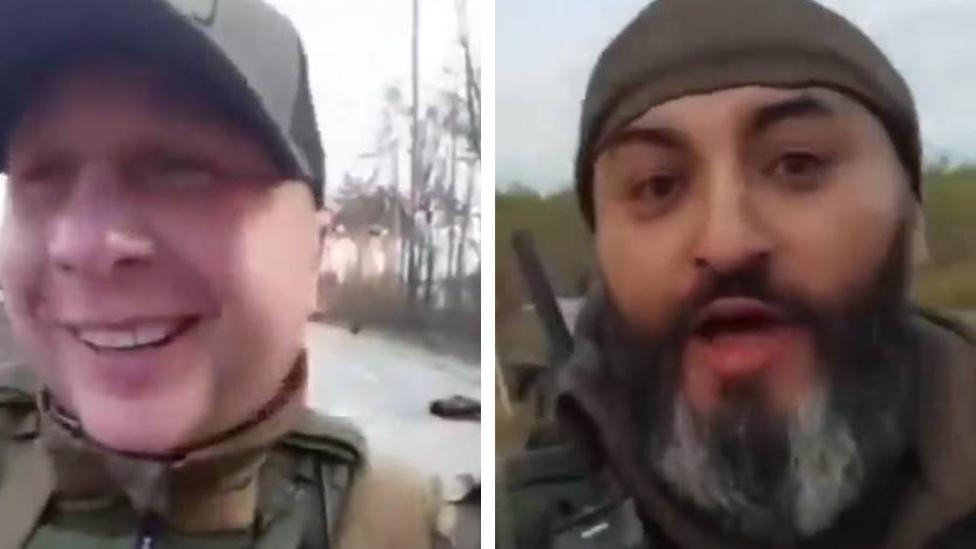
We have tried to biometrically match this face - a process where a computer algorithm compares an image to a huge number of photos of people's faces. The match is to a Georgian man with close links to Ukraine, but we are not naming him as we have not confirmed his identity.
As the camera pans towards the man with the beard, another person shouts "Glory to Ukraine", to which the man with a beard responds "Glory to heroes". The first person then shouts in an excited way - although the audio is not clear - what sounds like the word "Gruziny" which means Georgians in Russian.
The audio ends with a man saying: "Do not [expletive] come to our land."
We have approached the Ukrainian Ministry of Defence for comment.
We are still trying to verify elements of this video and will update this piece when we have more information.
Reporting by Paul Myers, Daniele Palumbo, Olga Robinson, Jake Horton, Alex Murray, Shayan Sardarizadeh, Alistair Coleman, Richard Irvine-Brown
